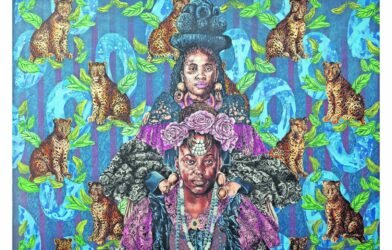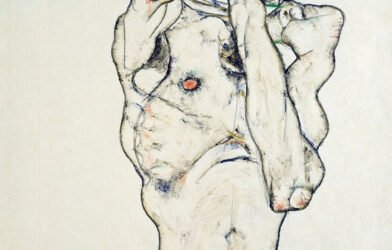The state of queer rights in African countries can tell you a troublesome story about the continent. In 2006, South Africa became the first African nation to legalize same-sex marriage, and, almost two decades later, remains the only one to do so (bar Namibia, which recognizes same-sex marriages done abroad). Nigeria’s President Goodluck Jonathan, in 2014, signed the Same-Sex Prohibition Act, leading to the arrest of 47 men five years later for public displays of affection with members of the same sex, an offense punishable by up to 14 years in prison. Uganda outlawed LGBTQ identification in 2023, and in 2024, Ghana’s parliament passed a bill criminalizing identifying as LGBTQ.
Yet, amidst these adversities, another story emerges — one of surefire resilience: during the 2020 #EndSars protests, queer Nigerians boldly asserted their presence. Ugandans and Zimbabweans continue to protest their country’s anti-homosexuality laws. Kenya and South Africa have been described as safe havens for LGBTQ asylum seekers on the continent, even though gay sex is illegal in the former. The Fola Francis Ball this month, held in honor of the late Nigerian transwoman and fashion icon Fola Francis, drew a vibrant and diverse crowd to a safe haven for queer individuals. Activists, artists, and everyday people continue to unite in defiance of oppressive government policies that have told them for far too long that they do not belong.
Art as a catalyst for change
At the heart of this collective resistance are visual artists who wield their creative platforms as tools to advocate for queer liberation. Artists like Leilah Babirye from Uganda are at the forefront, using exhibitions like her recent debut at a U.S. museum to amplify queer voices and challenge societal norms.
Babirye is not alone in using visual art to inspire change. Cameroonian sculptor and textile maker, Kialy Tihngang tells OkayAfrica: “I sometimes wonder if visual arts really do make an impact to queer African lives, beyond performative ‘awareness-raising.’”
Tihngang resonates with Zanele Muholi’s term “visual activist” – someone who uses their art to document and speak about a community that is so often erased and silenced. Her ongoing project, titled “Toghu,” involves recording interviews between herself and various Cameroonians across the LGBTQIA+ spectrum.
As a queer Black woman, Tihngang is always thinking about identity — whether her own shifting identities or those of the communities that she occupies. Her latest project, Neyinka and the Silver Gong, which premiered at Glasgow International Festival of Contemporary Art this month, explores this through the form of a high fantasy queer romance set in 9th century Scotland, about a tribe of marooned African women that mysteriously turn blue. “I played all of the characters, in an attempt to reckon with the multifaceted nature of my national identity.”
Tihngang adds, “I hope that my work, which so often is absurd and tongue-in-cheek, can provide an alternative view of queer African identities.”
Photo courtesy of Kialy Tihngang.
A Black queer Cameroonian artist, Kialy Tihngang is always thinking about identity.
Painter and illustrator, Arafa C. Hamadi agrees with Muholi and Tihngang. Reflecting on their artistic journey and the subjects that inspire their work, the non-binary East African, who prefers that their country of origin goes unmentioned as it endangers their safety, set out to record and showcase queer existence within their art, using space, scale, and sometimes sound and color. “I wanted to help people outside of the queer experience see us, and inspire the kind of joy and uniqueness that only queerness holds,” Hamadi tells OkayAfrica.
Hamadi has now explored these themes not only through installation and festival builds, but also in sound art, film, 3D art, virtual reality, and now in actual reality through the physical event spaces they create.
While Hamadi does not claim to be an activist, as doing so is dangerous in their country, they do believe that visual artists hold the tools to shift perspectives. “Artists of all kinds have the power to not only inspire,” says Hamadi, “but realize gorgeous realities that others can only imagine.”
Hamadi aims to demonstrate to others in similarly conservative countries that there are unique ways to convey stories that might otherwise go untold.
Photo courtesy of Arafa C. Hamadi.
Hamadi aims to demonstrate to others in similarly conservative countries that there are unique ways to convey stories that might otherwise go untold.
For Lebanese photographer and filmmaker, Mohamad Abdouni, a chance encounter with Edmond Baudoin, one of his childhood heroes, helped put activism through art in perspective. “During our brief exchange, he said something that resonated immensely: ‘Our only job as artists is to give, whatever it is we feel the need to give.’ And I honestly feel that about sums it up. Our job is to put out into the world whatever it is we have inside.”
Abdouni, who started out painting and drawing, quickly found his footing with photography and film, but he’s also recently been feeling more at home with music and sculpting. His themes vary greatly. “I’ve worked a lot on identity and queerness, but I’ve also tried to explore it away from the physical body,” he says. “I’ve explored memory, land, and collective histories as well.”
Preservation and legacy
Art and the act of creation often center around memory, remembrance, and preservation, as these concepts are fundamentally tied to human identity and the transmission of culture. Ahmed Umar, a Sudanese Norwegian interdisciplinary artist and LGBTQ+ activist, understands this. Umar’s work is about representing and preserving queer individuals in history. “I created a series focused on my death and how I envision being remembered,” he says. A part of this series, and perhaps one of Umar’s most striking works, is a ceramic sarcophagus resembling those of ancient Sudanese kings, housing his full body.
This sculpture poignantly expresses the anguish of oppression while celebrating his imminent mortality; a testament to his defiance against the notion instilled during his upbringing, that gay existence is sinful, that queer bodies are unworthy of burial among Muslims — unworthy of a dignified funeral.
“I was aware of my sexuality from a young age,” reflects Umar, who felt isolated and unseen as a teenager. “I knew that the love I desired was strictly forbidden. Art became my sanctuary.”
At the age of twenty, Umar fled to Norway from Sudan, where until 2020, homosexuality was a crime punishable by death. Over the ensuing years, he carved out a space for himself and his art on the international stage, challenging stereotypes and raising awareness about queer suppression. Umar describes himself as an “accidental activist.” “I did not actively seek this position,” he says. “What I do is share my life openly, which has given room for others to do the same.”
Photo courtesy of Ahmed Umar.
Umar encourages African queer individuals, out or not, to persist.
It is an immense privilege to be out as an African, a truth that many cannot claim for themselves. Tihngang, currently residing and working in the U.K., is pointedly aware of this. “I acknowledge my own privilege as a bisexual woman living freely and openly,” she says.
Umar also acknowledges his relative privilege in living openly, “Yes, I got out, and fortunately, things are slowly improving.” He urges queer Africans, whether out or not, to persist and uphold the fight for collective liberation.
Bayard Rustin, civil rights and gay rights activist once said, “When an individual is protesting society’s refusal to acknowledge his dignity as a human being, his very act of protest confers dignity.” This profound statement aptly describes Umar’s life, where his very existence challenges society’s expectations. “I’ve kind of forced many people to live with the fact [that] I exist,” he says, laughing. “I sometimes get messages from people telling me, ‘I’m sorry for insulting you in the past. I think you’re a decent person. I see you. I respect you.’”
Despite undeniable progress, there remains significant work to ensure full equality and acceptance for queer individuals across Africa and beyond. “I feel incredibly lucky to be able to use my work to create space for others to speak, and to create opportunities to listen and learn,” Tihngang says. “There is so much resilience and joy within the queer African community, and I am grateful to the many activists, visual artists, and queer African individuals who have paved the way.” She hopes her work brings joy to them.
From Your Site Articles
Related Articles Around the Web









